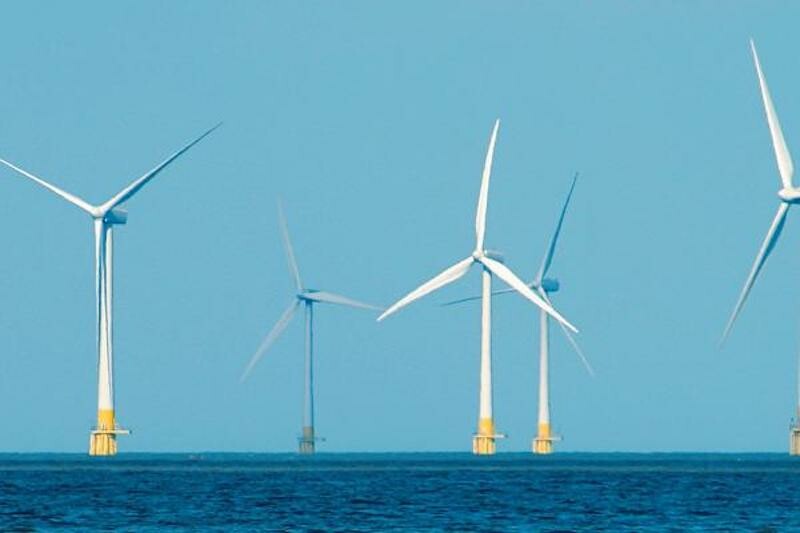The Department of the Interior announced Wednesday the transfer of regulations governing offshore renewable energy activities – including workplace safety and environmental compliance – from the Bureau of Ocean Energy Management (BOEM) to the Bureau of Safety and Environmental Enforcement (BSEE).
“Over the past several months, BOEM and BSEE have taken steps to ensure a seamless transition of functions related to safety and environmental protections for the offshore renewable energy program,” said Principal Deputy Assistant Secretary for Land and Minerals Management Laura Daniel-Davis. “This rule advances regulatory clarity and transparency for the offshore wind industry. It allows the bureaus to focus on ensuring that future clean energy development and operations continue to occur in a safe and environmentally responsible manner.”
In 2011, the Interior Department formally established BOEM and BSEE as new bureaus to carry out its offshore energy management, safety and environmental oversight missions. The establishment of BOEM and BSEE marked the culmination of an effort to reorganize the former Minerals Management Service following the Deepwater Horizon tragedy. As part of that reorganization, oversight of offshore renewable energy, then an emerging industry, was assigned to BOEM.
Wednesday’s action recognizes that the scopes of the bureaus’ roles and responsibilities have matured over the last decade and supports the Interior Department’s commitment to independent regulatory oversight and enforcement in the renewable energy program.
The rulemaking does not make substantive changes to current regulatory requirements, nor does it impose additional regulatory burdens.
Key authorities transferred to BSEE include, but are not limited to:
- Evaluating and overseeing facility design, fabrication, installation, safety management systems and oil spill response plans;
- Enforcing operational safety through inspections, incident reporting, and investigations;
- Enforcing compliance, including safety and environmental compliance, with all applicable laws, regulations, leases, grants, and approved plans through notices of noncompliance, cessation orders, civil penalties, and other appropriate means; and
- Overseeing decommissioning activities.
The Business Network for Offshore Wind (BNOW) said it supported the announcement from the Interior Department that delineates regulatory oversight governing offshore wind development between BOEM and BSEE. This split rule provides needed clarity and transparency for the offshore wind industry, ensuring a safety-first mindset and streamlined growth, BNOW said.
Today’s announcement comes on the heels of BOEM’s new proposed regulations that would modernize offshore wind processes in order to decrease costs and market uncertainty. Since BOEM and BSEE’s creation in 2011, their offshore wind roles and responsibilities have evolved as the industry developed. Although Wednesday’s announcement does not make substantive changes to current U.S. regulatory requirements or create additional requirements, it does provide marked delineations between the two Bureaus, including assigning responsibility to BSEE to evaluate and oversee wind project installation and safety management systems, enforce operational inspections, and compliance. Meanwhile, BOEM will maintain responsibility for determining offshore wind lease areas (WEAs), issuing leases, and reviewing and approving construction and operations plans.
This announcement "establishes a reliable regulatory framework that the industry can plan around at a critical juncture for U.S. offshore wind," Liz Burdock, BNOW's founder and CEO, said in a statement. "It is vital that as the industry grows, we adopt standards to ensure worker safety, regulatory certainty, and a clear set of guidelines for projects to follow throughout the country. 2023 is shaping up to be the year when we shift from demonstration to commercialization, and the proposed regulatory oversight sharing between BOEM and BSEE will provide safety for workers as projects continue moving forward."
Regulatory authority for the following functions remains with BOEM:
- Determining areas suitable for siting offshore wind energy facilities;
- Issuing leases, easements and rights-of-way for activities that produce or support the production, transportation, or transmission of offshore energy or energy resources;
- Reviewing and approving or approving with modifications or disapproving plans, including construction and operations plans, site assessment plans, and general activities plans, required for authorizing offshore renewable energy development; and
- Conducting analyses under the National Environmental Policy Act and other environmental studies and incorporating mitigation measures into plan approvals to avoid or minimize harm to the marine, coastal, or human environments.
A joint notice to lessees outlines the transfer of responsibilities with information for submitting information to each bureau. The final rule will publish in the Federal Register in the coming days.
This announcement comes following the release of a proposed rule from BOEM that would modernize regulations, streamline overly complex and burdensome processes, clarify ambiguous provisions, and enhance compliance provisions in order to decrease costs and uncertainty associated with the deployment of offshore wind facilities.





